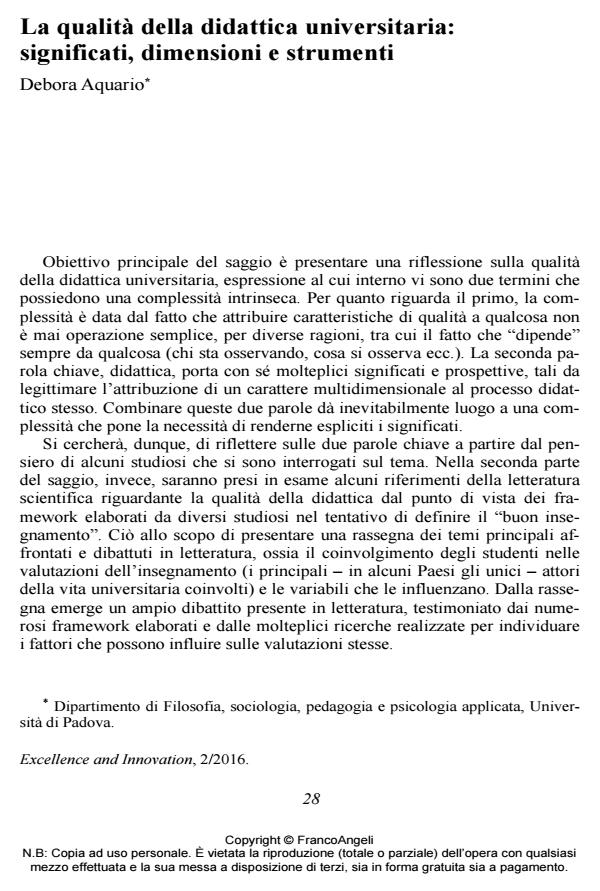Quality of teaching in higher education: perspectives, dimensions and instruments
Journal title EXCELLENCE AND INNOVATION IN LEARNING AND TEACHING
Author/s Debora Aquario
Publishing Year 2016 Issue 2016/2
Language Italian Pages 15 P. 28-42 File size 164 KB
DOI 10.3280/EXI2016-002003
DOI is like a bar code for intellectual property: to have more infomation
click here
Below, you can see the article first page
If you want to buy this article in PDF format, you can do it, following the instructions to buy download credits

FrancoAngeli is member of Publishers International Linking Association, Inc (PILA), a not-for-profit association which run the CrossRef service enabling links to and from online scholarly content.
The aim of the paper is to present a reflection about the evaluation of quality of teaching in higher education starting from the expression "quality of teaching": it contains two complex words that need to be considered in their meanings. In international studies about quality of teaching in higher education, many frameworks have been developed by different researchers with the aim of exploring the multidimensionality of the good teaching, as well as many instruments have been developed to be filled in by students for the evaluation of teaching quality.
Keywords: Teaching in higher education; quality; students’ ratings of instruction; good teaching.
Debora Aquario, La qualità della didattica universitaria: significati, dimensioni e strumenti in "EXCELLENCE AND INNOVATION IN LEARNING AND TEACHING" 2/2016, pp 28-42, DOI: 10.3280/EXI2016-002003